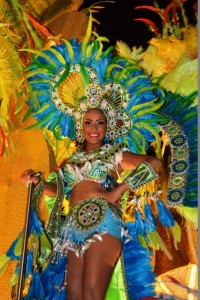This year’s Carnival has come and gone, and as we close out the week, the city and the country prepares to get back to business as usual. The four-day annual festival is a focal point for Panamanian culture, as locals from around the country celebrate with elaborate parades, outdoor concerts, and sponsored events spread throughout the nation. It’s also a major tourism event, making it the busiest week for the country’s hotels, restaurants, and private transportation services. According to the Panama Tourism Authority, this year’s Carnival alone brought in roughly 1.3 million tourists – both foreign and domestic – into the city.

This year, the city’s Carnival celebration was dubbed “Carnival Metro City”, in honor of the city’s new metro (subway) system, slated to open next month. This is the third year the city has thrown this event, and when you look at the numbers, it’s easy to see why it’s been so important.
Let’s Look at the Numbers:
According to early estimates, this week’s Carnival Metro City generated $164 million in total revenue for local businesses, specifically in the tourism sector. The Panamanian Hotel Association estimates that $104 million of this revenue was created by hotels, which were estimated at 95-100% capacity over the four-day period. These numbers are even more impressive when you take into account that many local businesses that aren’t in the tourism sector remain closed for all four days, or even the entire week.
Carnival Metro City has also been a great way for city officials and the national government to show off the latest improvements to the Cinta Costera, the 5-mile pedestrian-only coastal strip that runs along the coastline and Ave. Balboa. The Cinta Costera is now in “phase 3” of a massive infrastructural overhaul, that aims to reduce urban traffic, reduce noise pollution, and provide a safe green space for the city’s residents and visitors. During the Carnival celebrations, about a third of the Cinta Costera is cordoned off for open-air vendors, music, and various celebrations, with the entirety of Ave. Balboa closed off to traffic.
This year’s event boasted over 150 independent cart vendors, as well as three stages, with live music from 129 local artists, as well as international acts, performing over the course of four days and nights. Events ran on a rather tight schedule, and the city’s police force was out en masse to make sure law and order were maintained. According to Salomón Shamah, who heads the Panamanian Tourism Authority, reports of property damage and crime were minimal, and “were insignificant” when compared to the scale of the event.
By all measures, 2014 was a great year for Carnival Metro City, and officials plan on continuing this trend and improving each year as the event, and city grows. With the anticipated opening of the Metro (Subway) in April, national elections in May, and the new additions to the canal set to open in 2015, the bar will be set even higher next year. Hopes are high that with this type of success, the city’s Carnival will become a sustainable example of national pride, and economic success for many years to come.